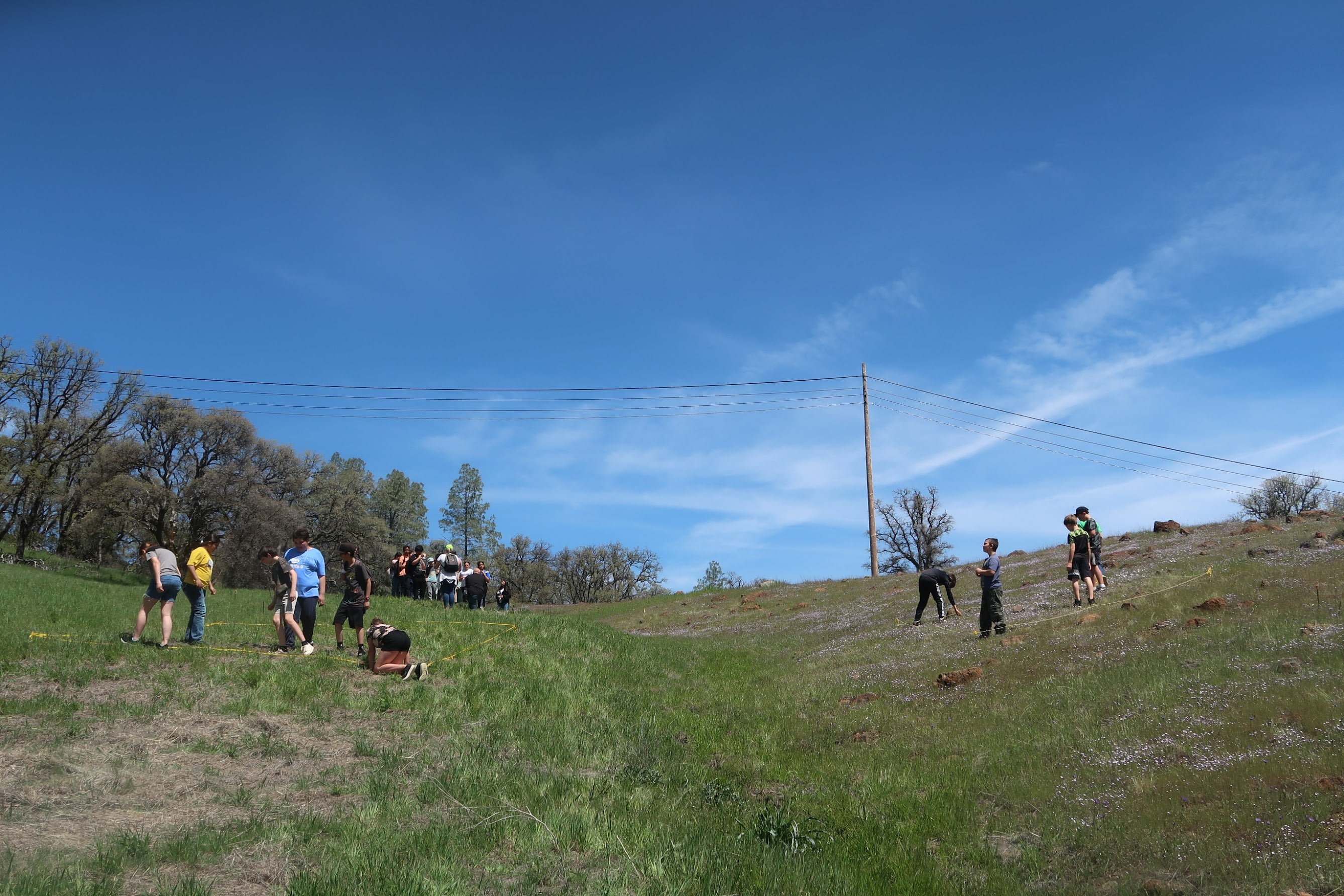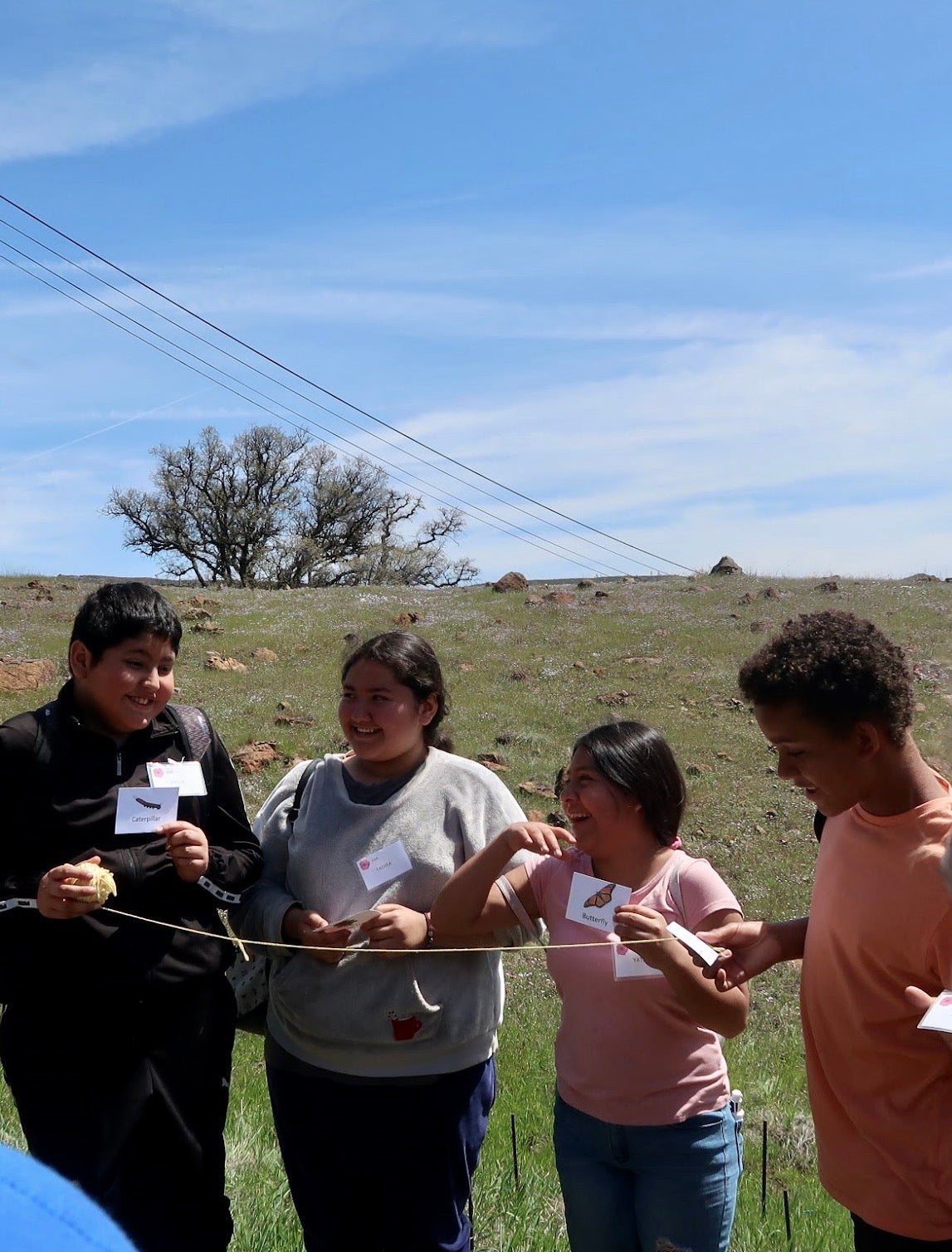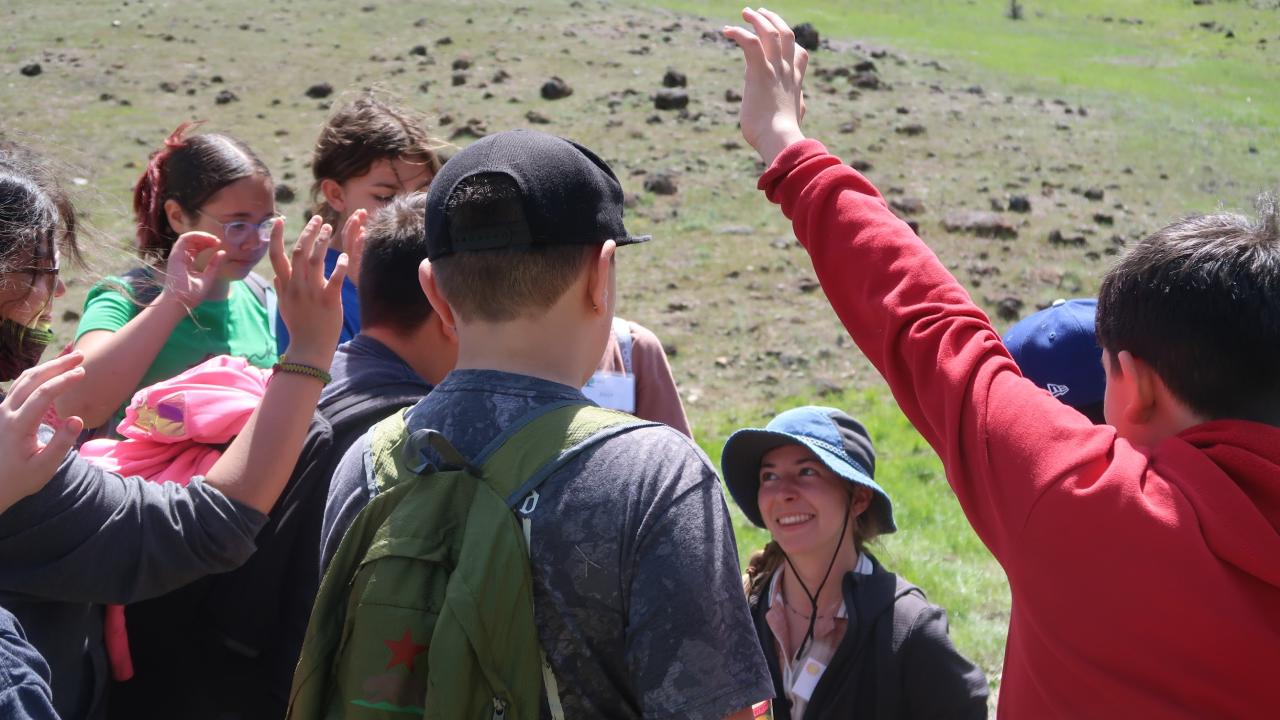It was the fifth graders’ first field trip of the year, and the excitement was off the charts.
Tiny fingers pointed and asked “What’s this flower?” at the pollinator station. Binoculars pointed towards the red-winged blackbirds across the pond. A yellow string was passed student to student to demonstrate a complex food web.
This field trip to McLaughlin Natural UC Reserve in spring 2023 was the culmination of the 10-week Kids Into Discovering Science program, led by UC Davis graduate students and faculty for the fifth graders of Lower Lake Elementary School in Lake County.
Completely volunteer-based, the KiDS program has served around 80 fifth graders every year since 2010, seeking to inspire academic and scientific achievement in low-income and under-served school districts.
MJ Farrugia, a UC Davis PhD student in ecology, took the lead in 2023.
“As a woman of color and a person who didn’t grow up experiencing the outdoors, experiential, hands-on learning opportunities are how I gained the skills and confidence to be a natural scientist,” said Farrugia. “I hope to inspire students to see themselves as scientists, whether they grow up to become one or not!”

Students were split into groups of 10 and rotated through several stations with a UC Davis undergraduate mentor. From tree coring with UC Davis Professor Andrew Latimer, to seeing the stark serpentine-to-loam contrast first-hand, the day fostered scientific curiosity.
“This is like the best field trip ever,” exclaimed fifth-grader Nathan.


Viviana Fonseca, a fifth-grade teacher at Lower Lake Elementary, beamed: “This is something that they will remember for the next 10 to 15 years,” she said.
A sense of place
One of the goals of the program is to inspire a sense of place in the fifth grader’s local environment.
For 10 Fridays in the classroom this past spring, the young students took part in an ecology experiment comparing serpentine to loam soil at the reserve, which is only 20 minutes from their school.
“The land carries life,” said McLaughlin Reserve Director and KiDS founder, Catherine Koehler. “We want them to look outside their windows from a science perspective and think about how the land is shaping what they see.”
In the classroom, they developed hypotheses, measured plant emergence and growth, created graphs with their data, drew conclusions, and summarized their findings, “just like any professional scientist would,” said Farrugia.
“The loam grew better than the serpentine,” said a student named Alex. “The loam is not as dry so it helps produce more plants.”

Each week, different scientists were brought into the classroom to talk with the students.
“Students were introduced to many different versions of what a scientist can study and what they can look like,” said Farrugia.
“They are more excited,” said Fonesca. “They love Fridays. We get more attendance on that day too.”
‘But why?’
With kids, this question is relentless. But natural curiosity often dims as students progress in their education.

Low-income communities face consistent disparities regarding access to STEM education and outdoor spaces. These “STEM deserts” can carry on throughout early education and impact diversity in STEM careers greatly. “But why?” is often crushed by income inequalities.
The rural Lower Lake community has a population of 1,036 and a poverty rate of 39.44%. The KiDS program aims to make science tangible and accessible to low-income, minority students, explained Farrugia.
Studies show that nature- and field-based science education improves STEM academic capacity, mental health, and overall quality of life, especially for low-income children of color. Taking early natural curiosity and using it to fuel question-based and active learning has the capacity to inspire the next generation of scientists and problem-solvers.


“Do you want to be a scientist?”
“YES!” screamed the group of kids around me. They launched into an overlapping chorus of what kind of science interested them. Later, I interviewed them separately:
“I like looking at bugs. They are really interesting,” said Sophia, who wants to be an entomologist.
“I want to be someone who does plants and flowers and stuff,” said Aniya, a future botanist.
“If my chef thing doesn’t work out, I’ll become a scientist,” said Jude.
Brianna wants to go into science communication, but mainly as a side section of her soon-to-launch YouTube channel.
“I want to be a bee scientist. Bees are cool,” said Kason. “And I could go to schools and teach them about it, too!”

Malia Reiss is a science news intern with UC Davis Strategic Communications. She studies environmental science and management at UC Davis.
Media Resources
Kat Kerlin, UC Davis News and Media Relations, 530-750-9195, kekerlin@ucdavis.edu
